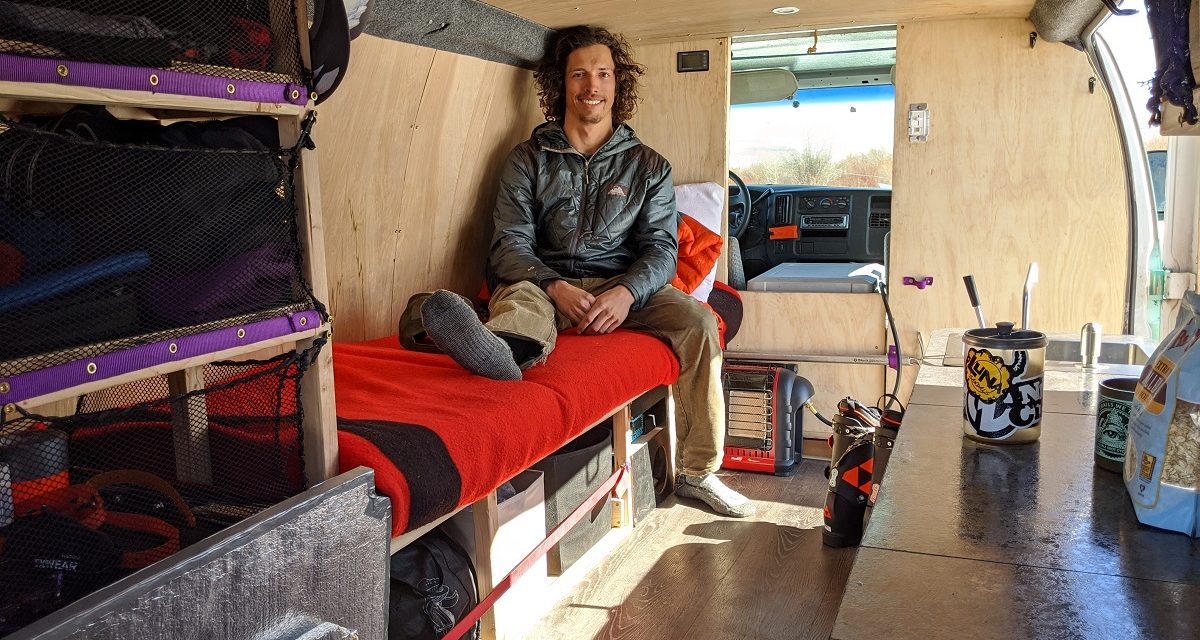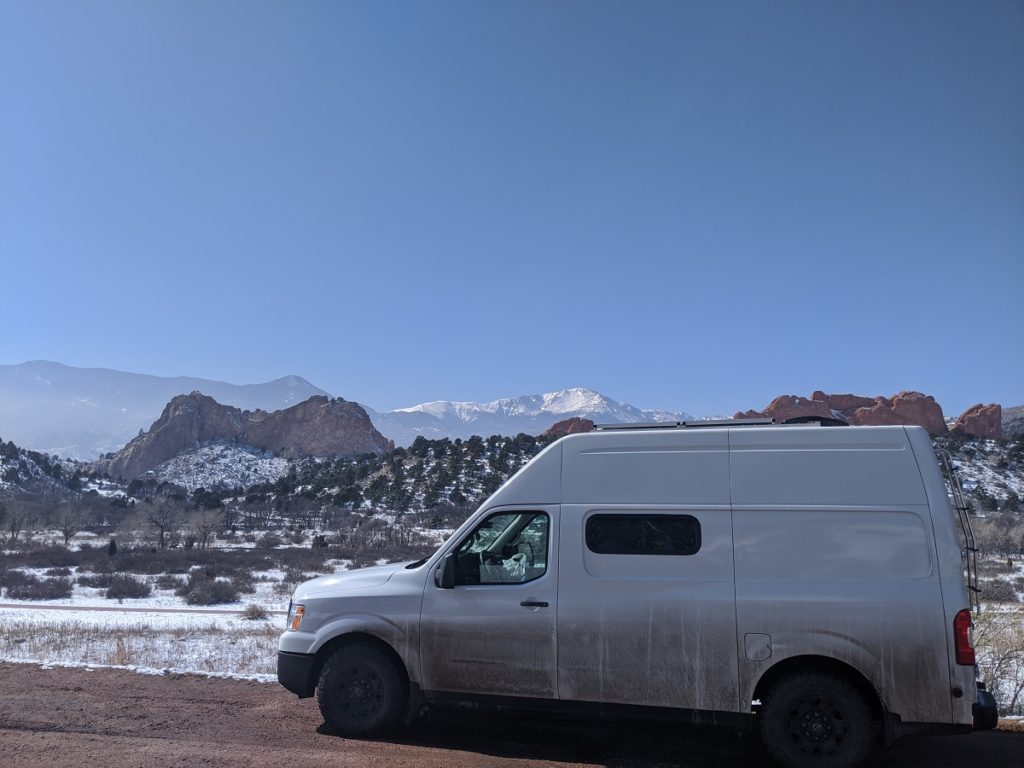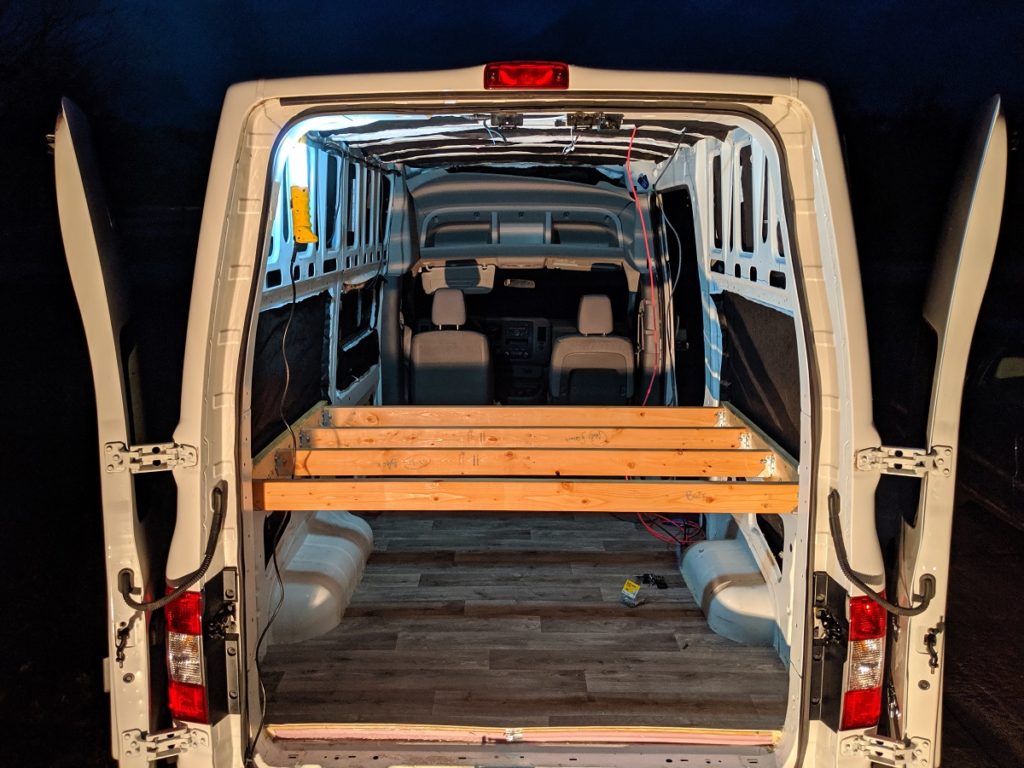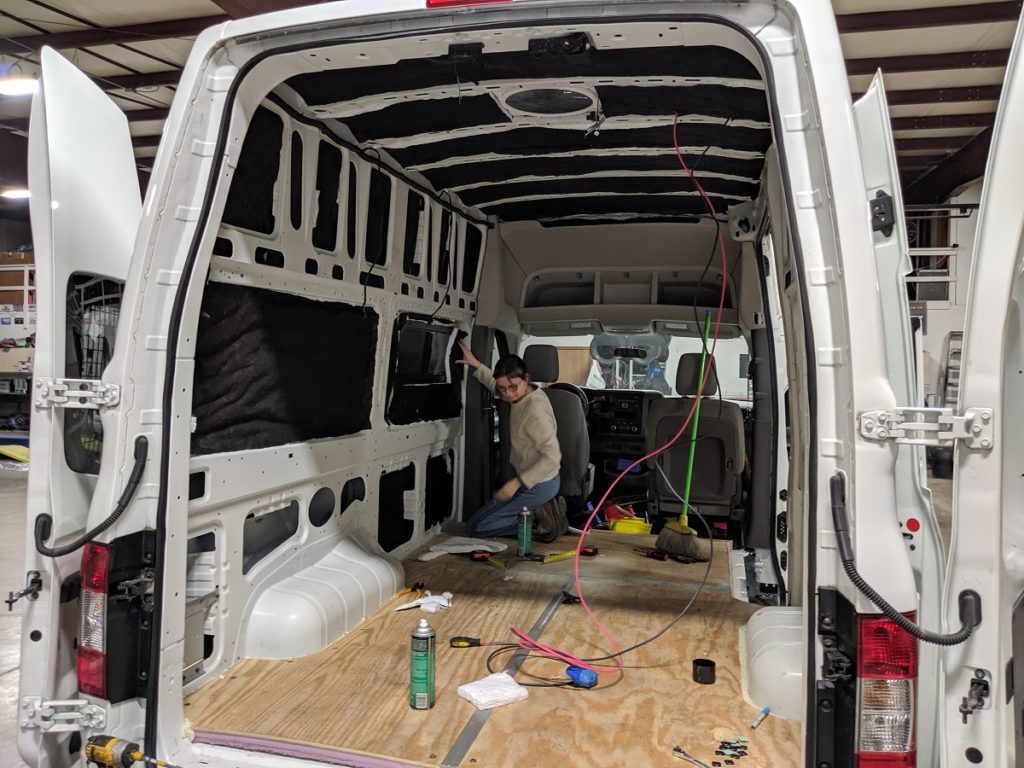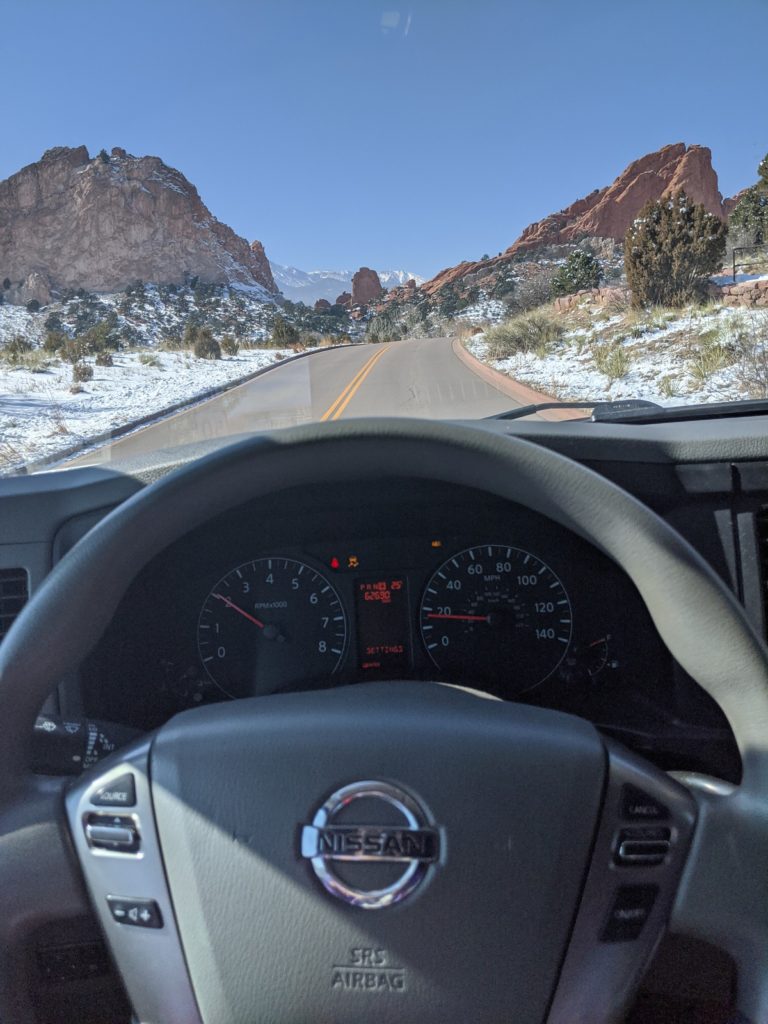Image: Riley Moser of Anchorage, Photo by Parker May
You’ve been following that Van Life influencer from Youtube and that Van Girl from the climbing gym on Instagram. Every time you go to the crag you can’t help but notice the plethora of decked-out vans in the parking lot. Inspired by the successful van dwellers all around, you’ve decided it might be the lifestyle for you. So, where do you start?
The Van
There are a few main factors to consider when finding a van that suits your needs.
Budget:
Establishing a budget is important before purchasing your van. Like most big purchases, vehicles have A LOT of costs associated with them beyond the listing price; for example, insurance, registration, and taxes are costs you incur after the purchase of your van. Followed by potential repair costs, including common routine maintenance such as tires, alignments, and fluid changes. Knowing the hidden costs associated with your van is important for determining your budget.
For me, dedicating funds for function trumped aesthetics. Having a proper solar setup is far more important than having the prettiest countertops at the crag. You might be tempted to mimic one of the beautiful interiors of the many Sprinter vans littering Instagram, but a functioning van should be your first priority if you’re on a limited budget.
Reliability:
If you’re working on a limited budget like most van dwellers, consider vans within your budget that have a long life ahead of them. On the road, I’ve met people with twenty-year-old cargo vans with 300,000+ miles that face mechanical issues regularly. They bought the van with 280,000 miles and then poured their heart, soul, and money into a nice build on the frame of a run-down vehicle. Just because most social media depicts high-top Sprinter vans as the “premier” #VanLife camper van, doesn’t mean it’s the only option. In my opinion, you’re better off with a 10-year-newer Ford E-150 than that contractor’s older Mercedes Sprinter with 120,000 more miles at the same price.
Once you own your van, maintenance is important. Putting in small amounts of work over a longer period of time will save you headaches in the future. Make sure to check and change the fluids regularly. It’s not a bad idea to carry an extra quart of oil and check your oil level every other gas fill. Given the constant elevation changes around climbing areas, your van will be ascending and descending many hills. Change the brake pads before they warp your rotors and use a low gear going downhill to engine brake, which saves your brake pads.
Inevitably, things break, but sometimes with a little know-how or a quick YouTube search, you can be back on the road. For example, I always carry an extra serpentine belt. This winter while on the Western slopes of Colorado, mine broke. In less than 30 minutes, I was back on the road.
Unfortunately, this isn’t always the case. One of the more common problems van dwellers run into is a tie-rod end failure — certainly the result of washboarding on gravel roads leading to the climbing areas. Though you could likely fix this on the spot, unless you have a friend that can drive you to the nearest auto-parts store, you’re going to need a tow.
Getting your van towed is EXPENSIVE. This winter a friend of mine put his van into a ditch during a blizzard. After calling several towing companies, the cheapest option was $350, but he was quoted up to $650 by other companies just to get pulled out of the ditch. It costs even more on top of that to get towed to a repair shop. Some people opt to pay for AAA, but just like with insurance, you may be paying for a service you don’t end up using. However, it’s a nice safety net to have, and in the event that you need a tow, it will certainly save you some money.
Size:
Even if a van is within your budget and reliable, that doesn’t automatically make it a great fit for you. Consider what style build fits your lifestyle to determine if the van’s space best suits your needs.
Some people could live out of a car for years while others couldn’t make it in a full-size RV for more than a week. First, determine if there is enough physical space for you and all your desired amenities. If you’re traveling with companions, is there enough room for everyone? Next, consider your storage needs. If you’re a weekend warrior, lots of storage may not be as important as someone who carries all of their possessions with them. Do you Kayak? Mountain bike? Hang glide? Evaluate your larger possessions and gear then how they would be stored in your rig.
The Build
Before you start hacking a hole in your roof to drop in a vent fan, determine a target build cost and some tentative build plans. As with all building projects, you shouldn’t make your target build cost the absolute maximum amount you can spend on the conversion. When you set up a target build cost, think of it as more of a number to shoot for and know it’s entirely possible to go over this and be prepared to do so! Designs don’t always work as planned, things break, and plans change. If this is your first attempt at carpentry, you’re bound to make a wrong cut or two and will need to repurchase supplies as a result. Measure twice and cut once, but nonetheless, expect to encounter some errors along the way. Small additions like an unexpected cabinet or changing your water system can easily add to your build cost as well.
Just like sizing a van to fit your needs, your build plans need to take into account your lifestyle and habits, since you are developing the space that YOU will live in. Too often I’ve seen people latch onto a popular build guide and mimic it instead of building around their own needs. Although a particular build may be efficient and practical, you could have potentially made an even better fit for yourself. If you get creative and are flexible, you can build out a great customized van. There are tons of build guides available on the internet to give you ideas. Make sure to consult as many as possible to explore all the options, and don’t be afraid to apply concepts and ideas from many different resources.
Similar to the over-glamorization of day-to-day life on social media, Instagram has also set a high standard for #VanLife and van builds. However this isn’t the norm, nor is it required to have a great tiny home on wheels. Some of the famous rigs sport luxurious $60,000 buildouts; nevertheless, we were able to retrofit our entire van for $4,000 and it contains a refrigerator, propane stove, sink, diesel heater, full solar, lithium battery banks, full-size bed, composting toilet, tons of storage, and feng shui to make it feel like home. I’ve come across $25,000 builds that offer no more “luxury” than ours and $1,800 builds that offer more amenities than our van. Be patient, resourceful, and creative, you can have a great build at a reasonable cost too. Simple things like checking Facebook Marketplace before you run to the hardware store for a sink or building a compost toilet instead of purchasing one can save you a lot of money over the course of a build.
The Life
Prior to quitting your job and hitting the road in your newly converted van, what’s your plan?
Making money on the road isn’t easy but it’s doable with the correct preparation. Do you want to work remotely? Seasonally? Full time at the same location? Outline your plan to make money and implement it as much as possible BEFORE you head out. My plan was to find seasonal work in the food industry. I had some bartending experience prior to living in the van, so it has been easy for me to find seasonal work in restaurants and bars.
Preparation also includes having a rainy day fund. Unexpected van repairs, a tow out of the ditch on a stormy day, or the unanticipated hospital visit are well within the realms of possibility. So it’s best to be ready and not stranded without a way out.
With the logistics covered, what about you? Living in a vehicle provides emotional obstacles unique to being on the road. If you’re not traveling with a partner, be prepared to spend time alone. Just because you’re stoked on climbing the day you roll up to a crag, you may not always find a climbing partner. More importantly, how do you fare without any close family or friends around? You’re going to spend a lot of time alone, but you’re also going to spend a lot of time with astonishing people. On the road, I’ve met some of the most influential people that have become a huge part of my life, but I’ve also had many days in a row when the only person I’ve talked to was a gas station attendant. The ability to take solace in just your own company is vital.
Do your research, be patient, and consult multiple resources; you’ll be building your van in no time. Building a van is a huge adventure in itself, but remember: it’s also your gateway to the bigger adventures to come.
Explore More
Related articles and pages you'll love- Our 30+ most popular articles ever
- Dirtbag Tricks: How to Stay Warm When It’s F****** Cold
- How to Climb Every Day This Summer for Under $1000
- Dirtbag Dwellings: Van Life with Kyle Moran (and His Dog) of Pasadena, California
- This Week’s Best Rock Climbing Gear Sales
- The Dirtbag Privilege
- Get daily updates by Liking us on Facebook
- Free rock climbing PDFs on technique, training, knots, and more

